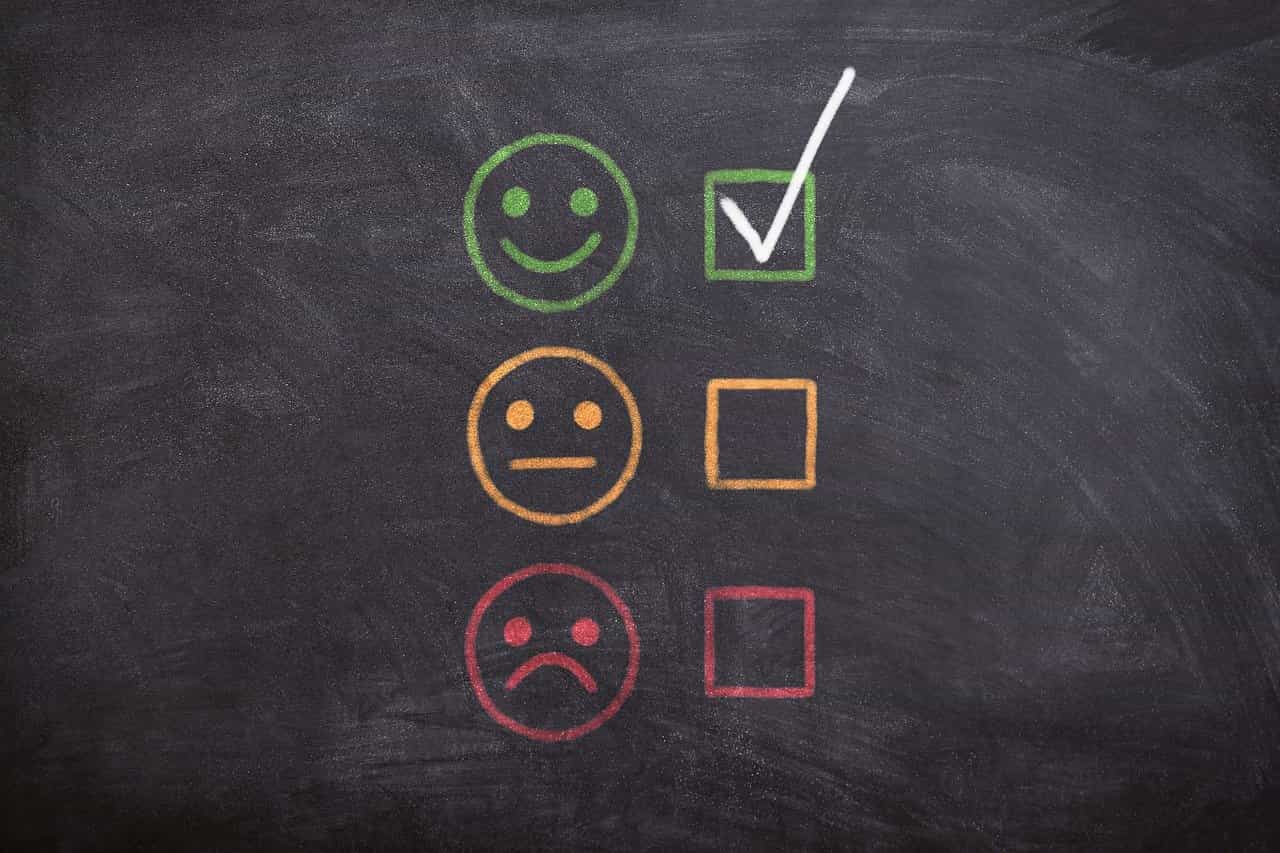
Bien vs Bueno: The Complete Guide to End Your Spanish Struggles
DATE:
One of the biggest problems students have when they start to learn Spanish is the difference between bien vs bueno. To be fair, it’s not easy to know when to use one or the other when you’re just starting with the language.
Here’s the short answer:
- Bien = Well
- Bueno = Good
But unfortunately, dear learners, it’s not so simple. The RAE lists 18 different definitions for the word bien and 10 different definitions for the word bueno. So with this in mind, the short answer might not always give us the meaning when it’s time to speak Spanish.
So lucky for you, we’ve prepared a complete guide to walk you through nearly all the usages of the word bien and the word bueno, this way you’ll be 100% prepared for your next Spanish conversation. (And you’ll likely save yourself some embarrassment, too!).
Here it goes: everything you need to know about Bien vs Bueno.
How to use bien
Let’s start with the word bien. It might be the easier one of the two, so it’s a good one to start with. We won’t be going over all 18 definitions point by point, but we’ll cover all of the most common ways native Spanish speakers will use it.
As an adverb
The word bien is an adverb, and this is its most common usage. In case you don’t remember from your Spanish grammar classes, adverbs are words that affect or describe a verb. Let’s look at some quick examples to see how this goes:
|
Spanish |
English |
|---|---|
|
El programa funciona bien |
The program works well |
|
¡Bien hecho! |
Well done! |
|
¿Cómo te va? Bien |
How’s it going? (It’s going) Well. |
|
Juega al tenis muy bien. |
He plays tennis very well. |
So, just like in English, bien is always going to describe the verb. How does he play tennis? He plays well.
This is sometimes an issue for English speakers because, in some dialects, people tend to use good as an adverb, rather than well. However, in Spanish, this is completely unacceptable.
So this is the biggest difference between bien and bueno and it’s a very important one to remember.
To agree

Now one of the first contexts you’ll see bien used in is during situations where you want to agree to something by saying “ok, sure”. Basically, any time you want to agree to something in a neutral way or to give someone permission to do something.
- ¿Te lo pongo en una bolsa? Bien, sí. – Should I bag it for you? Sure, yeah.
- ¿Quieres más arroz? Bien, ¿por qué no? – Do you want more rice? Sure, why not?
- Luego tendrás que hacer la cena, ¿vale? Bien, no te preocupes. – Later you’ll have to make dinner, ok? Sure, don’t worry about it.
Using bien this way is fairly neutral, you’re not expressing any excitement nor are you being negative. Here, a lot of it depends on your inflection, as well. If you lower your voice and roll your eyes, that’s a very different message than if your voice raises and you smile.
This might seem obvious but these kinds of “unspoken rules” are important to know for Spanish learners. For example, you could also say “muy bien” in the last one, to come off as a bit more positive in your response.
Very / Really
Especially in Latin American countries, bien is frequently used as a modifier to mean “very” or “really”. Generally speaking, you could add this before any adjective to make it intensify the meaning. Here are some examples:
- La tarta está bien rica. – The cake is really tasty.
- La clase fue bien divertida. – The class was very fun.
- El hombre iba bien borracho. – The guy was really drunk.
So in most Latin American countries, you can use this word as a synonym for “muy”.
Fine / Well
This is most commonly used as a simple response to people asking how you are. You can simply respond with bien to say that you are fine / well. You can also say it to mention that someone is ok or not hurt after something happened.
- Hola, ¿cómo estás? Estoy bien, gracias. – Hello, how are you? I’m fine, thanks.
- ¿Qué tal todo? Muy bien, ¿y tú? – How is everything? Really well, and you?
- Ay, cariño te caíste, ¿estás bien? Sí, estoy bien. – Oh sweetie, you fell. Are you ok? Yes, I’m fine.
So as you can see, many times these might be the first words you say to someone, so it’s good to know when to use bien vs other phrases.
With verb Estar
When combined with estar, bien can mean several different things depending on the context. These two words combined can mean the following:
- Acceptance of something
- Papá, ¿puedo salir con mis amigos esta tarde? Está bien. – Dad, Can I go out with my friends tonight? That’s fine.
- To be a good situation
- Últimamente tengo mucho trabajo, pero eso siempre está bien. – Lately I have a lot of work, but that’s always good.
- Está bien que tengas más tiempo libre. – It’s good that you have more free time.
- Así está bien. – That’s good how it is.
So this is where many Spanish learners start to get confused since bien is translated as good in English. But the key to remember is that it’s because it’s used with the verb estar. You’ll never use “es bien”.
Bravo
Whenever you want to say “bravo”, to congratulate someone on something, or say you’re really happy about something, one of the easiest ways to do it is by shouting ¡bien! or ¡qué bien!
|
Spanish |
English |
|---|---|
|
Por fin he encontrado trabajo. ¡Bien! |
I finally found a job. Bravo! |
|
¡Bien! Has sacado muy buenas notas. |
Woohoo, you got really good grades |
|
¡Qué bien! Por fin es verano |
Yay, it’s finally summer! |
The important thing here is the pronunciation. Usually the vowel will be a lot longer. So you’ll want to make sure you say ¡bieeeen! and not just “Bien.”
To start a sentence

Finally, whenever you want to start a sentence after a long pause, you can use bien as a filler word. This is really common when it’s finally your turn to talk and it’s a way of having people pay attention to what you’re going to say. For example:
- Bien. Como decía antes… – Ok, like I was saying before …
- Bien. ¿Ya estamos todos relajados? Entonces, … – Ok, are we all relaxed now? So, …
This is something you’re really likely to hear from someone who is about to start a speech or from a teacher/parent waiting for children to calm down and pay attention.
How to use bueno
Great, now that we’ve gone over all the different ways to use bien, it’s time to move on to talking about its cousin bueno. Since there are a lot of differences between bien vs bueno, we’ll go through this essential Spanish vocabulary one meaning at a time.
As an adjective
The most obvious usage of bueno is as an adjective. These are words that describe nouns, like good, hot, funny, big, etc. This is a more simple way to use the word, so let’s see some examples:
- Quiero encontrar un libro bueno. – I want to find a good book.
- La película es buena. – The movie is good.
- Este es un coche bueno. – This is a good car.
- Las niñas son muy buenas. – They are good girls.
So this usage is pretty clear. Just make sure that you are changing Bueno to match the gender and number of the noun it is describing, so you can get bueno / buena / buenos / buenas.
With verb Ser
When combining the word Bueno with the verb ser, you can end up with a couple of different meanings depending on the context.
1. Something is of good quality
- Es una buena amiga. – She is a good friend.
- Es un material muy bueno. – It’s a good material.
2. Something is funny
- La película es muy buena, me morí de la risa. – The movie is really funny, I died laughing.
3. Something is healthy
- Las fresas son muy buenas. – Strawberries are healthy.
- Correr es bueno. – Running is healthy.
4. To be a good situation in general
- Es bueno que tengas tiempo libre. – It’s good that you have free time.
QUICK TIP…
Notice that for number 4, you could also use “está bien” interchangeably. But to have this meaning, estar goes with bien and ser goes with bueno.
So as you can see, the word bueno can be used with ser, another of the big differences between bien vs bueno. You just have to know that there are a lot of different possible meanings.
With verb Estar
Now we’re going to see the tricky part. When using the adjective bueno with estar, you can also get several different meanings and it’s very important to know the grammatical differences between ser and estar for this one. Let’s see this in action:
1. Something is tasty or delicious
- La paella está muy buena. – The paella is really tasty.
- Las fresas están muy buenas. – The strawberries are delicious.
2. Someone is hot / attractive
- Este chico está muy bueno. – That guy is really hot.
- Estás muy buena. – You’re really hot.
3. Someone is feeling better again
- Juan ya está bueno. – Juan is already better.
- Estaba bueno, pero luego se puso enfermo otra vez. – He was feeling better, but then he got sick again.
So here we have some big changes whenever using ser / estar with bueno. For food, saying something es bueno means it is healthy or high-quality, whereas if something está bueno, that means it is delicious.
Then for people, if someone es bueno, it means they are a good person. But if you say “está bueno”, it means they’re hot. So this is definitely a very important difference when you have a conversation with your Spanish-speaking friends.
To answer the phone
In some places in Latin America, especially in Mexico, you can simply answer the phone by saying “¿Bueno?”.
It’s probably best to not think too much into this one, sometimes you can’t always find a logical answer. Many languages just have specific ways to answer the phone and in Spanish, this is one of your options.
Calm a situation
If a conversation starts to get a little heated or if you want to cede a little bit in the conversation, “bueno” can be a good tool to have. Here are some examples:
- Bueno, yo no pienso igual pero no pasa nada. – Well, I don’t see it the same way, but it’s not a big deal.
- Bueno, vamos a volver a lo importante. – Well, let’s get back to what’s important. **
- Bueno, eso es verdad. – Well, that is true.
Arguing is a natural part of human communication and when you learn a language, you’ll want to also learn techniques to defuse situations. This way you can disagree on topics without offending the other person.
The word Lo has a wide arrange of uses: as a direct object pronoun, definite article, and many more. Check out our guide to master Lo in Spanish like a native.
“Not really”
If someone asks you to do something for them, but you really don’t want to do it, this is a way you can kindly express the fact that you don’t want to do it.
- ¿Quieres ver una película de miedo? Bueno… – Do you want to watch a scary movie? Uhm, well …
- Tengo entradas para ir a ComicCon, ¿te apuntas? Bueno… – I have tickets to go to Comic Con, you in? Uh ….
There’s not a really good translation for this in English, you just need to know that you’re expressing some apprehension toward the suggestion. Here, you’ll just want to lengthen the vowels and say it for a bit longer: “Bueeeenoo…”
Not that great

Have you ever had a terrible day and your friend asks you how you are? This is a great way to say “not great at all”.
- ¿Cómo estás? Bueno… ya sabes cómo es mi jefe. – How are you? Well…you already how my boss is.
Pero, bueno
If you want to express surprise, you can use a good “pero, bueno”. And you can use it for a really good surprise or a really bad surprise. For example:
- Pero bueno, ¿tú de qué vas? – Ok, what is your problem?
- Pero bueno, mira lo que tenemos aquí. – Well, well, look what we have here.
The first one would be used in the context of someone who is really offended, but the second one is in the context of someone either pleasantly surprised or parents who caught their kids doing something naughty.
You’ll hear this a lot on Spanish TV, like in the show Elite. So keep an ear out the next time you’re “studying” on Netflix.
How to use buen
Maybe you’ve noticed that “bueno” has an irregular form and sometimes loses the ending. This happens in one particular setting, so luckily it’s not too hard to remember. Let’s check that out now:
Before a masculine singular noun
When you want to use bueno as an adjective to mean good / high-quality, but you are describing a masculine singular noun, you can put the word before the noun and chop off the o. This might seem like sacrilege after finally learning that adjectives go after the noun, but this is an exception.
Here are some easy examples:
- Juan es un buen chico. – Juan is a good boy
- Hiciste un buen trabajo. – You did a good job
- Él es muy buen profesor. – He is a very good teacher
So it just depends on context and the syntax of the sentence. For example, you could say both “Es un buen libro” and “El libro es muy bueno”. Both are perfectly fine and up to you!
Bueno, ya está
You’ve done it! You’ve successfully managed to go through all the differences between bien vs bueno in the Spanish language. There are a ton of meaning changes, so give yourself some time if you don’t memorize it all today.
As you start seeing these words in context, too, it’ll start to make sense to you. The best way to do this is by simply practicing. go ahead and sign up for a free private class or a 7-day free trial of our group classes so you can practice what you learned!











